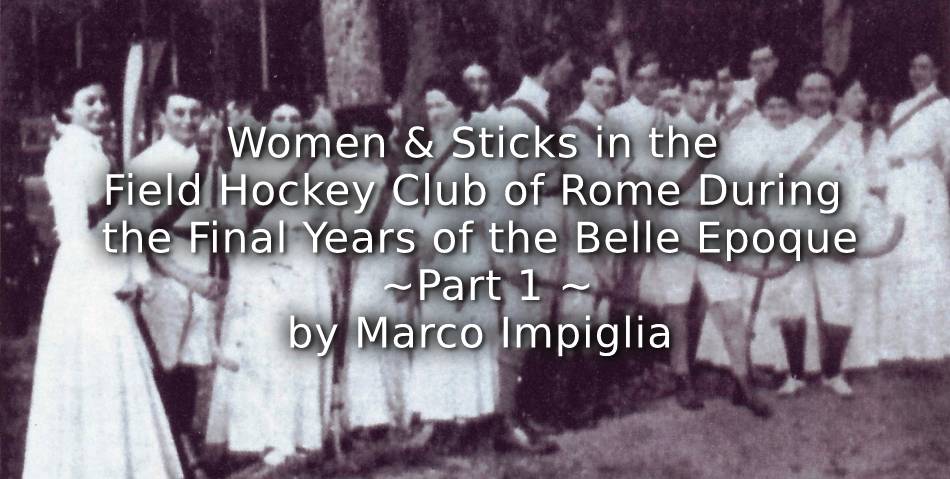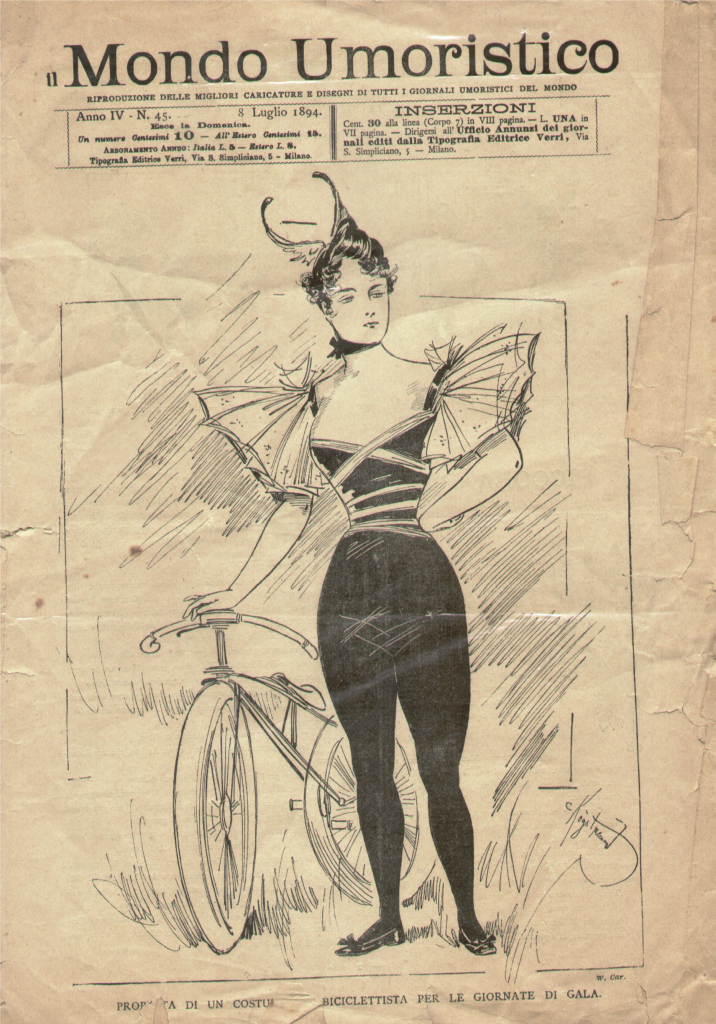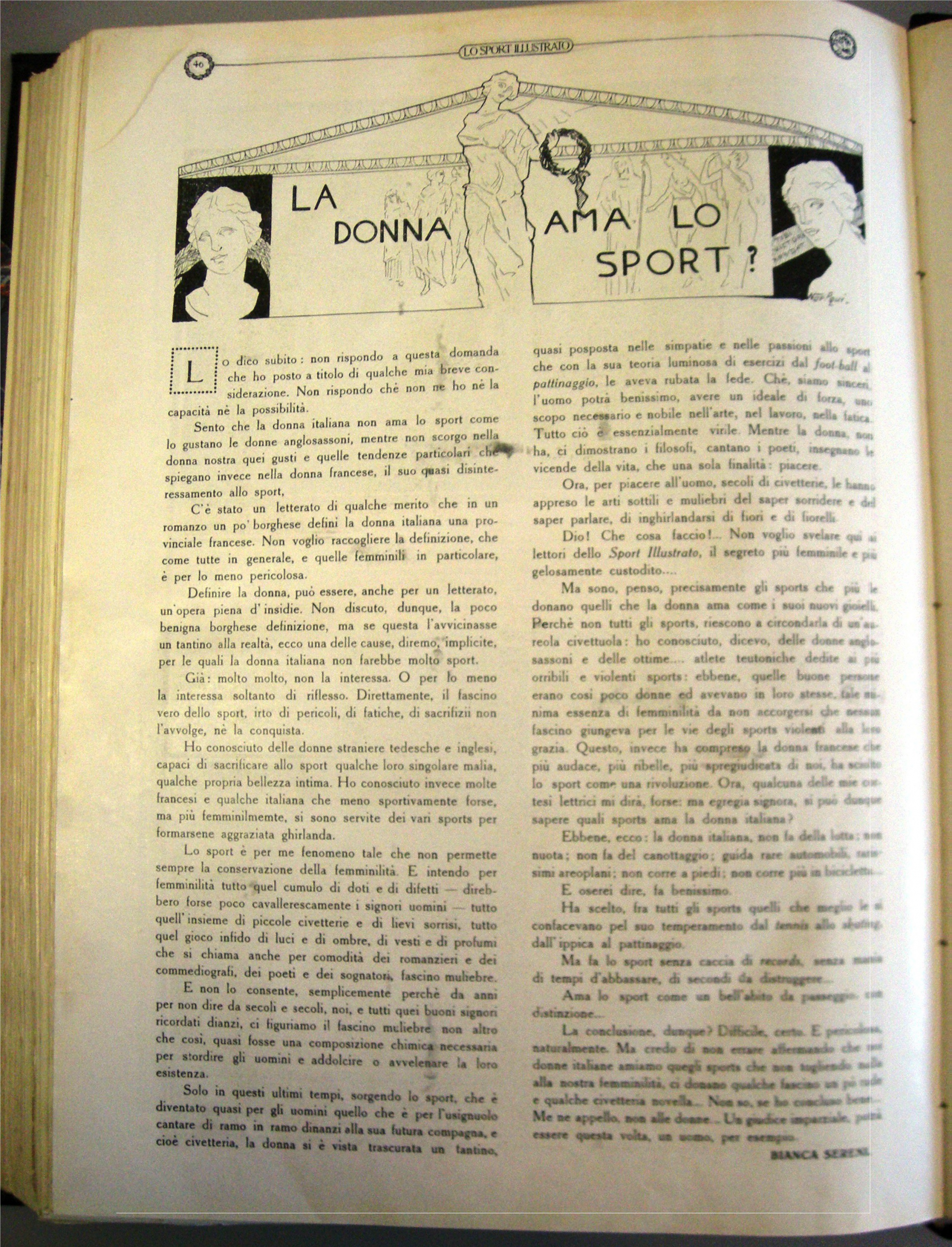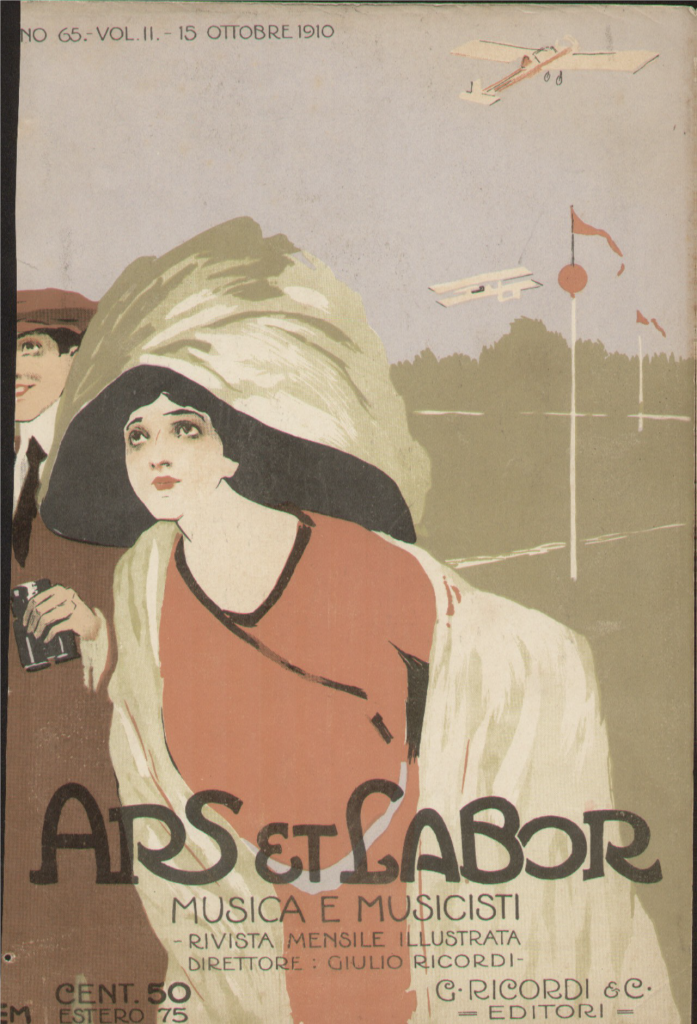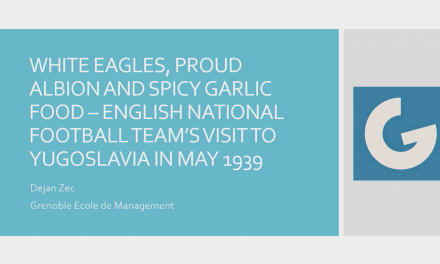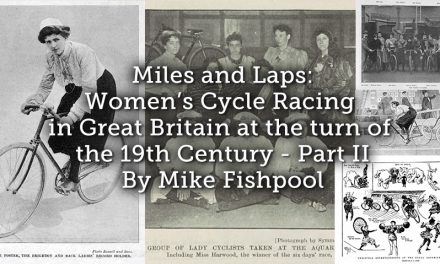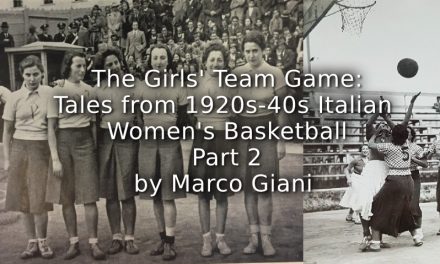Many modern sports arrived in Italy during the nineteenth century and the first two decades of the twentieth, thanks to the British. Rome, capital of the Kingdom of Italy since 1870, was the city that most of all felt the British influence for the installation of open games. The two oldest capitoline sports societies still alive, the Roman Society for Fox-Hunting (1842) and the Royal Circle Canottieri Tevere Remo (1872), were founded by the British or by the direct influence of the British. The most popular city soccer team, Associazione Sportiva Roma, has its roots in an English partnership: the Roman Football Club (1901). This is because the Eternal City has always had a special attraction for the citizens of the United Kingdom.
In 1895, about two hundred British residents were calculated. Nevertheless, many more took up temporary residence or were passing as travelers. A weekly newspaper, The Roman Herald, served as a reference point for English-speaking people. The newspaper, which came out on Saturday, remained alive from 1885 to 1915. Who were these Englishmen? First, the elite world of upper classes, interested in ancient culture and the gentle landscapes of the Roman countryside, often owners of villas, palaces and related to the Capitoline aristocracy. Secondly, diplomacy officials. Thirdly, the teachers and students of religious colleges. Finally, but not least for dynamism, the businessmen of the commercial companies. Four categories that, together with the tourists, constituted a proud community, very active in doing sport and promoting it.
For some sports, the British contribution was mainly concerned with regulations, training methods and technical innovations, without giving a significant boost to the organization of the disciplines. Track and field, cycling, motor racing, swimming, water polo, boxing, equestrian and horse racing fall into this category. Other sports have not passed the barrage of the Anglophone community for complex reasons, which would require a case by case analysis. Cricket, polo, rugby, archery and badminton fall into this category. The sports that, brought and practiced for the first time by the English in their modern coding, immediately met the satisfaction of the natives, are the following: dog races, rowing, soccer, skating, lawn tennis, field hockey, golf, fox-hunting. Half of them were characterized by being held in a promiscuous context by both sexes. But only one placed men and women really in contact in a team discipline, where it was possible to struggle for the possession of a ball with sticks in hands, and this sport was field hockey. For a short time, an extraordinary (and no longer repeated) laboratory on Italian soil in favour of gender equality in sport.
-
Il Mondo Umoristico, July 1894.
At the beginning of the XX century, many people in Italy (and in France also) thought that cycling could be another instrument for women to attract the opposite sex.
All together passionately!
Field hockey in Rome originated in the Young Men’s Christian Association. In 1903, an officer of the British Army, whose name has not remained, beeing interested in this institution and himself a good player, suggested hockey as one of the features of the physical department.
Field hockey was born in the sixties of the nineteenth century, codified in English colleges together with rugby and soccer. The Hockey Association dates back to 1886. The British military propagated it in the colonies, especially in India, Pakistan, Australia and New Zealand. With the help of a young American resident in Rome, whose name also has remained unknown, the English officer organized a small group among the YMCA boys and young men. The YMCA had arrived in Rome in October 1894, when the Evangelicals had founded a circle called Associazione Cristiana della Gioventù. From conferences they had briefly moved to a sporting activity, more effective in attracting young people. In the early 1900s the headquarters of the A.C.D.G. was in a large gym in Via della Consulta, not far from Termini Station. A hundred men and boys interested in gymnastics, weight-lifting and all kind of athletic disciplines attended it.
-
Lo Sport Illustrato, December 1913
The author Bianca Sereni suggests that the sports loved by Italian women are lawn-tennis, equitation and skating.
The “Cristiana”” was presided by an Englishman, Benton Hale; an article of the statute allowed members to belong to any religious belief. As a coat of arms it had a blue triangle on a white field and, for this reason, it was called “society of the triangle”. In the early days, it was rather difficult for the American businessmen and the English officers to arouse enthusiasm among Italians which attended the gym. They noticed disconsolately that the number of affiliates was not enough to organize the training sessions. Then they changed direction, moving towards those English-speaking travelers who went to Rome for relatively long periods. To play open games with them, you just had to go to the lawns facing the villas outside the southern ancient city walls. The group called itself “The Anglo-American Club”.
This second phase did not last long too. Some of the British and North American players decided that, if they wanted to continue in the field hockey adventure, it was appropriate to establish a permanent club, open to residents and travelers of all nationalities and both sexes. It was precisely the choice to allow women to register which proved to be successful. In the spring of 1905 a mixed “committee” of gentlemen and ladies was formed, which gave birth to the Rome Hockey Club, in golden yellow and purple red colors. You could count on about forty members, perfectly balanced between the two sexes. The chance of practicing a team sport together with men and peers with them, without handicaps and barriers, had in fact aroused the interest of a fair number of girls from the Roman aristocracy. The daughters, sisters and girlfriends of that gay and animated world formed on the basis of generations of mixed marriages between natives and foreigners belonging to the high society.
-
Ars et Labor, October 1910.
The fox-hunting meetings already provided the opportunity to get together in a dynamic and exciting situation like a full-blown ride in the green Roman countryside. Field hockey was a pleasant, new addition. To demonstrate that the times were propitious for the brave Diana forged in the electric of the new century, in the same months came out articles that dealt with the theme “feminism and sport”. Readings that spurred women to a “freer and more hygienic life”, to dissolve once and for all from the valid cliché for Balzac, who in his Philosophie du Mariage wrote that the real woman should not think of anything other than «à lisser ses cheveux, à leur faire exhaler des odours enivrants, à brosser seus ongles roses». A kind of woman sexually controlled and which was destined to remain, in short, always and only an object of luxury, a creature that flees from light and noise, who cannot walk or act.
President of the RHC was elected Mr. Eustace Bethell, resident for many years in Rome and manager of a Tea-House in Trinità dei Monti, the most traditionally English area of the town. As secretary was appointed Miss Clare King, and treasurer Miss Helen Ravi. As a point of information, Miss King began operating in a room at Palazzo Sterbini, in Via del Babuino, the famous street filled with atelier of painters and sculptors. The annual membership gave the right to hire equipment and free entry to the playing field. You could register for one month only, in which case you paid a reduced rate to a third. The official headquarters of the club was set along the Via Appia Nuova, on a land owned by two members of the Club. The caddies were always ready to supply the tools to the hockeists who arrived by carriage, or with the first automobiles, from the city, traveling the dusty consular road which had been recently built.
The area to the south, lined with spectacular villas and ruins and landscapes, was in those years the favorite of the English-speaking community for its loisir activities. To the southeast there were the Roman Castles; and even more inland was Tivoli, with its decorative thermal baths, waterfalls, the Roman Villa Adriana and the Renaissance Villa d’Este; driving to the southwest you could reach the seaside resorts of Ostia, Anzio and Nettuno. During the warm season, from April to October, the Rome Hockey Club began to produce regular training sessions and unofficial games between members once or twice a week, following the rules authorized by the Hockey Association of England. The activity of the club included trips, picnics and tea-parties, for which a family atmosphere was established which strengthened the friendship between men and women, despite the prevailing moral prejudices.
In a similar way to the game of korfball in the Netherlands, field hockey in Rome was a social engineering experiment, a step forward on the path of equality between the sexes. To some extent, it can be linked to the feminist movement in Britain, the much-maligned “suffragettes”, and was an indirect consequence. In the field of sporting practice, the free and independent attitude of the English and American ladies and young ladies had indeed intrigued their Italian friends, to the point of inducing them to experience the thrilling experience of a team sport played in mixed ranks; which the current opinion believed was unworkable as a trip to the moon for the Italians, as it would have given rise to intrigues of a sexual nature. Instead, everything went smoothly. The promiscuous sport showed its beneficial influence on the psycho-physical health of women and on the serenity of a cohesive social group. The fundamental point for success was the possession of a high standard of education. The example provided by Americans and English members who convinced the Italians. The fact of being in an environment little influenced by a severe Catholic code also played a role.
-
Lo Sport Illustrato, December 1913
The author Bianca Sereni suggests that the sports loved by Italian women are lawn-tennis, equitation and skating.
The Rome Hockey Club phenomenon attracted the attention of Frederick Carrington, writer and journalist rather known in North America for his collaboration with several magazines. Carrington witnessed the first edition of the Rome Hockey Cup in April 1906. He remained the entire summer in the Eternal City and, back in the USA, published an article for the monthly “Physical Culture”, of which we report the initial excerpt. The article itself was titled Ground Hockey in Rome is Working at Reform, quoted in “The Roman Herald”, February 9, 1907:
The scene was an oval basin, the hills sloping down to form a natural stadium. Rich velvety grass covered each slope, and here and there were majestic “stone” pines. Two picturesque “villini” or old houses of the Roman aristocracy – one opposite the other – occupied prominent positions on the slopes. The level floor of the oval was almost enclosed by a tier of seats constructed from the natural tufa rock. A third of the way down the open, stood two slender goal-posts seven feet high and four yards apart, with yellow streamers fluttering from their tops; at the same distance from the other end stood two similar posts with red streamers. Lines of stakes each with its little yellow or red flag, marked the oblong field. There was a scrimmage going on near the goal of the “yellows”, sticks were cracking together and the small white leather ball snapped from place to place dangerously near the posts. Suddenly there was an opening! One of the “reds” instantly took the advantage, and, with a clever stroke, drove the sphere straight for the goal. But the goalkeeper was ready! He caught the ball with foot and stick, and then drove it into the field well out of danger. A little young woman took the ball and started toward the opposite goal. A fair opponent blocked her, and there was a lively play for possession before other players closed in. The field was dotted with players, some having yellow and blue, and the others red and white caps. In each team were as many women as men. It was a game of the “Rome Hockey Club”, which is doing so much for the social betterment and physical development of the young Romans – one of the institutions which are helping the present generation of Italians far more sturdy and robust than its predecessors.
Mr. Carrington witnessed the final result of the rapid process which led to the choice to receive the gentle sex to participate in the open games for men. His notes on the lack of sportsmanship of Italian women, defined as “sluggish temperament”, are illuminating; while it is added to the “wrong moral conditions”, especially in the south of the country, the impossibility for young men and women to make friends outside the allowed courtship rules, and therefore in a sports environment. They were the American young ladies which opened their eyes to their native peers. At first, influenced and overwhelmed as they were by the prevailing masculinism, the latter did not believe they could be on a par with their English-speaking friends. We read again from Carrington’s article:
And it is due to American and English initiative and perseverance that this healthful game is now one of the permanent sports of the Romans. Not only are athletics arousing the physical energy of the Italian girls, who are of an indolent temperament, particularly in the southern provinces, but they are a powerful factor in bringing the young Italian men and women into that friendly relationship which has been an impossible thing heretofore in Latin countries. Because of traditional and mistaken moral conditions of the country, the Italians have always declared that it was an impossibility for unmarried men and women to be comrades. The freedom and independence of the English girl and her American cousin – particularly the latter – are or were, looked upon askance at first by the Italians. They did not believe that a healthful and generally beneficial association of the sexes was possible, but that any such association must of necessity be tainted with intrigue. As time passed and they had added opportunities to study American and English women, their ideas began to change and some accepted such a possibility for the nationalities in question. “But of us Italians, it is impossible” they affirmed. But this “impossibility” is being made a possibility is more or less due to the English game of ground hockey and American energy and love of sport. The Rome Hockey Club of to-day – now four years old – which is one of the outcomes of the new order of things, is composed of over forty members, representing young men and women of a number of nationalities, but chiefly Italy. It is the same game as ice hockey, but is played on a turf field. While popular in England it has not yet many devotees among American sport lovers. In England, the Ground Hockey Association is one of the most important among the athletic organizations. If you stop at Gibraltar or some other British military station on your trip aboard, you will find the “Tommies” – officers and men – enthusiastic followers of the lively game. They play it with a dash and vigour that would do credit to a football struggle. From a physical standpoint, the game has greatly benefited the young women, making them lithe and active, and driving away headaches, colds and other ailments which were due to their inactive life in the past; and, for the young men, it is one of the forces which are helping to make a finer masculine standard in a race that had long been deteriorating physically. From a social standpoint, the hockey club is promoting friendship between the young men and women. Besides the friendly outdoor intercourse at games, picnics, etc., social gatherings are arranged, this making the young people better acquainted, and aiding in breaking down the barrier of mistaken moral conditions. For four years the Rome Hockey Club has been in existence with its mixed membership. There have been no evil results, and all unite enthusiastically in voting it an unqualified success.
Article © Marco Impiglia
Part 2 will be published on Thursday 28th November

